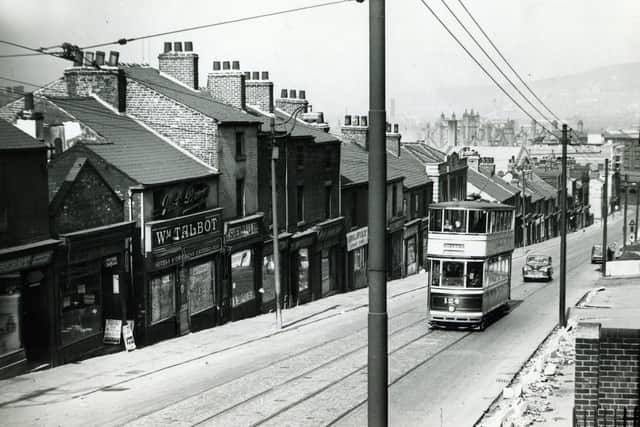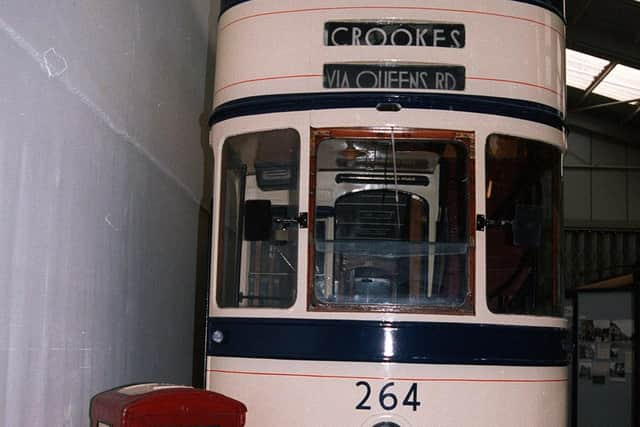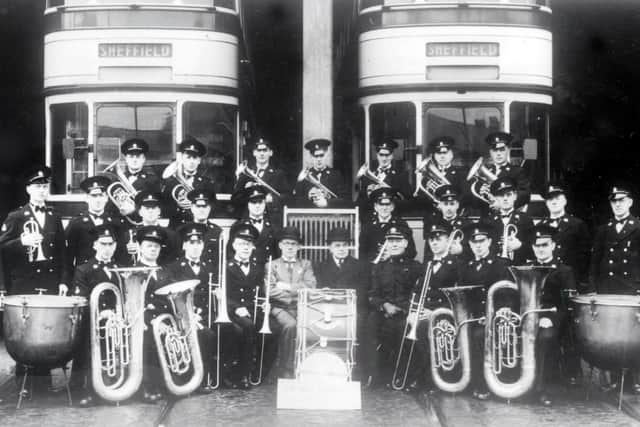Memories of Sheffield's old 'Fearnley's Boneshakers' trams
and live on Freeview channel 276
The first story written by the late Jack Hambleton is about Sheffield’s hair-raising tram rides of the 1930s and the second is just a piece of whimsy that may make you laugh as well. Jack insisted it was based on a true story.
The lovely Jack, who was born in 1924, was sadly one of Sheffield’s first coronavirus victims last March. His daughter Ann Holmes and her husband David say that they are happy to email out copies of Jack’s Sheffield stories to anyone who contacts them at [email protected].
Advertisement
Hide AdAdvertisement
Hide AdFearnley’s bomeshakers – better than a fairground big dipper


Mr A R Fearnley. A name that became well known throughout the city of Sheffield, from the early part of the 20th century, to the mid 1930s.
He was appointed general manager of the city's Corporation Transport Department in 1904, holding that post for over 30 years.
His name was embellished on the side of every dark blue, cream and gold-trimmed painted tramcar and bus.
Advertisement
Hide AdAdvertisement
Hide AdThe tramcars were affectionately known by the citizens as Fearnley’s boneshakers.


Numerous tram routes were spread out from the city centre to the suburbs like a spider's web, ending at a terminus, where, perched high up on a tall green pole, was a large round clock.
The tram route from the city centre to the suburb of Walkley gave the passengers the most exhilarating ride of all.
The favoured seat to be had was on the upper deck of the tramcar in the front rounded glass bay.
Advertisement
Hide AdAdvertisement
Hide AdWhen the tram started out on its journey from the Cutlers Hall in Church Street, there was no expectation of the excitement to be experienced before it finally reached its destination at the terminus at the end of South Road.


It proceeded along West Street in a dignified manner.
Ascending to the top of Hounsfield Road, a pointsman would leave his small wooden shelter having noted from a window the approaching tramcar's indicator of its destination, being either Walkley or Crookes.
He placed an iron lever firmly into the lines points. With a jerk he would send it on its way.
In fine weather the pointsman had a pleasant outdoor job but in wind, rain or snow, wearing his waterproof cape and hat, he must have cursed every tramcar coming into view.
Advertisement
Hide AdAdvertisement
Hide AdContinuing along the flat Crookes Valley Road, passengers looked to the left, seeing gentlemen playing their leisurely, peaceful game of bowls.
In the background a fountain of cascading water sprayed out of a large white bowl into the Dam Reservoir.
Looking to the right, and over Crookesmoor recreation tip and Upperthorpe, Parkwood Springs could be seen in the distance.
The white steam coming from the funnel of an express train, having travelled from Manchester, and passing through the suburb of Neepsend nearing its journey's end at Victoria Station.
Advertisement
Hide AdAdvertisement
Hide AdThe excitement of the tramcar's journey was about to begin as it was driven into a left 'S', and then right bend. The passengers clinging to the brass rail encircling the bay window.
Climbing Barber Road, it rounded another curve before reaching the 'hump' stop at the top.
One minute you were gazing at the sky, the next minute you were looking at the ground.
Still getting your breath back, the driver was away down into Commonside 'dip', then swaying around a right-hand bend into a left-hand bend to reach the stop at the top of Howard Hill.
Advertisement
Hide AdAdvertisement
Hide AdWith a whirr of its electric motors, and the driver clanging the footbell, the amiable 10-ton giant hurtled down Howard Road at a full speed of 25mph into South Road, where the tramlines were almost on the pavement, and then the smooth flat run into the Walkley terminus.
For one penny (pre-decimal currency) you had experienced a more exciting ride than any fairground big dipper'could give you.
The nostalgic memory of those reliable and friendly Titans will never fade.
The telly atheist
I was desperate, I went into the City Reference Library, that institute of knowledge. A reservoir of information.
Advertisement
Hide AdAdvertisement
Hide AdThe neatly-stacked volumes beckoned me. The encyclopaedias. The dictionaries. Who’s Who and What’s What.
I eagerly scanned their multitude of pages. It was all there, but not what I craved to know. I despondently made my way to the information desk.
The charming librarian asked me if she could be of any assistance, my depression lifting as I inquired. The pretty, smiling face turned to one of concern, tears appearing in her clear blue eyes.
“Are you feeling well?”
“Do you want to sit down?”
“Would you like a glass of water?” she asked, then advising me: “Maybe you should go and see your doctor, I am sure he can cure you.”
Advertisement
Hide AdAdvertisement
Hide AdI returned home and telephoned the university, that esteemed seat of learning.
“Yes, sir, I do believe we can help you. Our Professor Knowitall has a degree in remembering names and creating new ones.”
The knowledgeable one speaks to me. He had never heard of my problem, I must be the only one to desire such a title, he says to me, but he would look into the matter and phone me back.
I wait impatiently. The phone rings.
Professor Knowitall speaks: “Ah, Mr R...rrrr...rr... Sorry old chap, I’ve forgotten your name. Now about your problem. There is no such title but I have created one for you.
Advertisement
Hide AdAdvertisement
Hide AdYour request was ‘What is the opposite to a telly addict’. You will be delighted to know that I have made you a telly atheist.”
“But,” I reply, “an atheist is a person who doesn’t believe in God.”
“That’s right, old chap,” enthuses the professor. “The telly is God.”
In these confusing and worrying times, local journalism is more vital than ever. Thanks to everyone who helps us ask the questions that matter by taking out a digital subscription or buying a paper. We stand together. Nancy Fielder, editor
